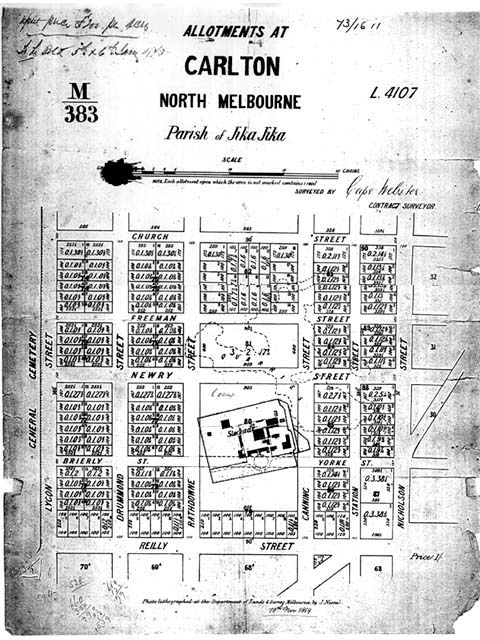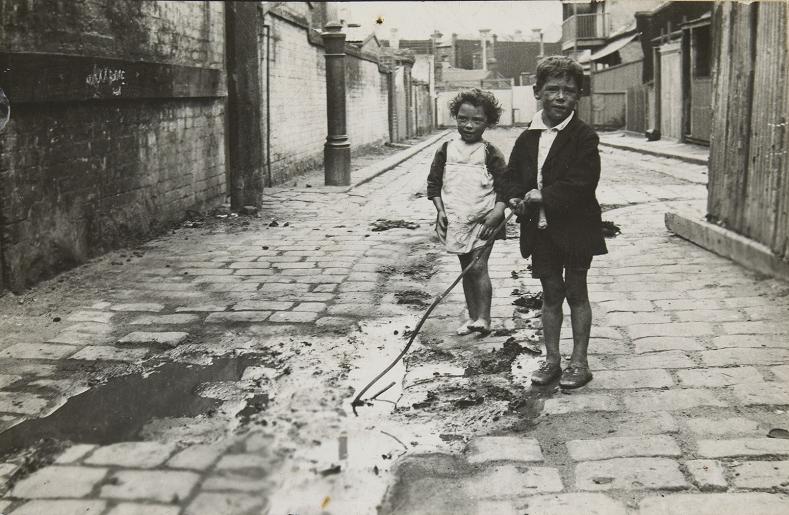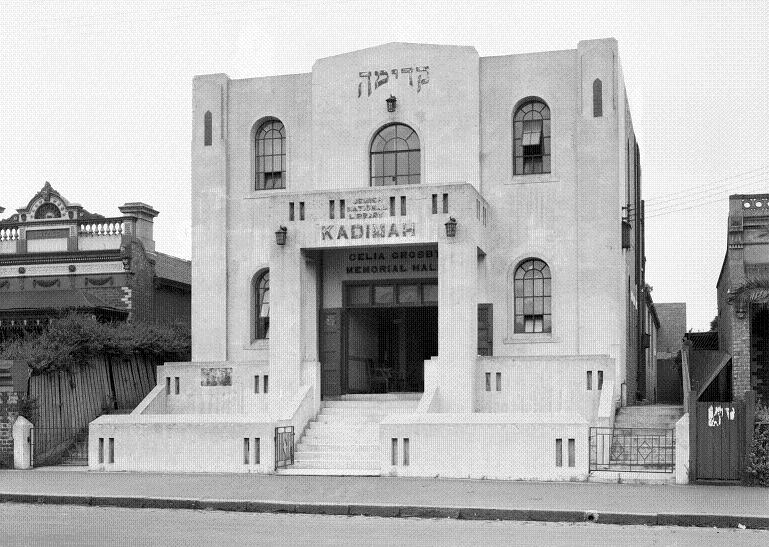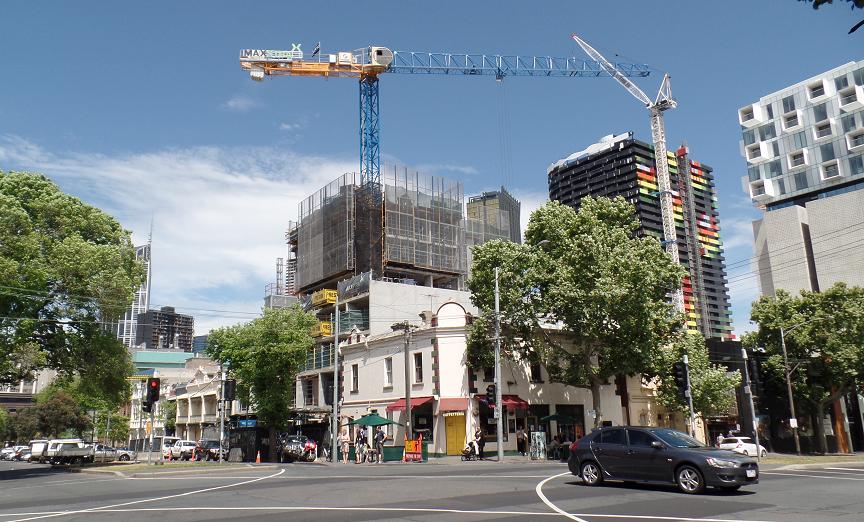About Carlton
Welcome to Carlton – or rather to the many Carltons that have existed over the years. Ours is one of the earliest suburbs of Melbourne, in the state of Victoria, Australia. Carlton began its life in 1852 as an extension of the City of Melbourne, north of Victoria Street. As an inner suburb Carlton was deeply affected by the gold rush in the 1850s, when an influx of migrants seeking their fortunes created an unprecedented demand for accommodation and housing. This need was met, to some extent, by the Wesleyan immigrant home, opened in Drummond Street in 1852. In the absence of building regulations, Carlton developed in a haphazard manner, with substantial brick and bluestone buildings being erected alongside canvas tents or wood and galvanised iron structures. Carlton was a mix of shops, houses and factories. Some notable early Carlton residents were Judge Redmond Barry, Rev Moses Rintel and Ebenezer Syme, editor and proprietor of The Age newspaper.

Image: State Library of Victoria
An early plan of Carlton, dated 1852, showing the streets north of Victoria Street
(Note there are spelling variations in street names and the location of Lygon Street is named as Rathdowne Street)
The northern end of Carlton was a wooded area occupied by a prison stockade, which opened in 1853. After its closure in 1866, the area was ripe for development. The first land sales north of Reilly (now Princes) Street took place in 1870 and the new suburb of North Carlton was created. Hot on the heels of the land sales, regulations of the Melbourne Building Act were extended to Carlton and North Carlton. Property owners and builders were required to notify the Melbourne building surveyor of their intention to build or alter structures. This led to a better quality of building stock, and both Carlton and North Carlton became desirable addresses. But rules were made to be broken and there were pockets of sub-standard housing on small blocks, often occupied by low-income renters who could afford no better. There were also problems with drainage and sanitation, which were not resolved for decades.

Image: State Library of Victoria
Parish plan M383, dated 1869, showing part of North Carlton and the former stockade site
Carlton really came into its own in the 1880s and many of the extant Victorian-era buildings date back to this period. The decade began with the opening of the Exhibition Building (now the world heritage listed Royal Exhibition Building) to host the International Exhibition of 1880. In 1883, at the request of local residents, the area north of the cemetery was named "Princes Hill". This was seen as the "upmarket" area of North Carlton, with larger house blocks and more room for gardens and open space. The Carlton cable tram route along Lygon and Elgin streets commenced in 1887, followed by the North Carlton route along Rathdowne Street in 1889. The inner circle railway, opened in 1888, ran along the northern boundary of North Carlton and Princes Hill, connecting with North Fitzroy and Royal Park. The availability of affordable public transport opened Carlton and North Carlton up to new housing and commercial opportunities. In 1888, the Exhibition Building hosted the Centennial Exhibition and, once again, Carlton was the destination of many intercolonial and overseas visitors. The economy was booming and land speculation was rife. As in the gold rush of decades before, fortunes could be made and lost within a few days or weeks.
By the dawn of the next decade, the optimism of the 1880s gave way to the depression of the 1890s. Carlton and other inner city suburbs were badly hit. Men left their families to go looking for work and families were evicted from their homes because they could not pay the rent or the mortgage. Local shopkeepers were unable to stay in business, while speculators and investors were declared insolvent, and some even committed suicide. Unoccupied areas of the Exhibition Building and the unfinished Queen's Coffee Palace in Rathdowne Street, an ill-fated property investment commenced in 1888, were proposed as shelters for the unemployed, but rejected by the government of the day. The economy recovered over time, but Carlton was later to suffer through the great depression of the 1930s.

Image: State Library of Victoria
The Exhibition Building, Carlton Gardens, in the early 20th century
For much of the twentieth century, Carlton was working-class and notorious for poverty and crime. Large families often lived in tiny Victorian cottages, some but not all of which had improvised lean-to bathrooms stuck onto the back. But many of those residents remember it with fondness. Shops selling everyday essentials, bread, groceries, meat, fruit and vegetables, were often run for decades by members of one family and customers were greeted by name, their preferences readily recalled. Kids had a huge amount of freedom. There was a strong sense of community and a willingness to help when your neighbour was in need.

Image: State Library of Victoria
Children playing in the slum area of Carlow Place, Carlton, in the 1930s
By the 1930s Carlton was housing a growing Jewish population, most of whom arrived here with little or no English and penniless or in debt to sponsors who had helped them escape the horrors of anti-Semitism in Europe. Parents were working night and day, often in the clothing trade or on stalls at Victoria Market, an immensely popular shopping area in the central business district which has been operating since 1878, and burdened by fears of what was happening to family members left behind. As a result, these children too enjoyed great freedom, running in and out of each other's houses at will. A number of synagogues and Jewish schools sprang up. Of course, many of the traditional shops remained but in many others Yiddish was the language of choice. But the era of Jewish Carlton was short-lived and as these migrants prospered they moved south of the Yarra River to join the longer-established Anglo-Jewish population.

Photographer: Lyle Fowler (c. 1941)
Digitised Image: State Library of Victoria
Jewish National Library and Celia Grosby Memorial Hall, Lygon Street, North Carlton
The houses they vacated were occupied by another wave, a postwar wave of Italians and later Greeks and Lebanese. Front gardens suddenly sported well-tended vegetable plots and in some homes salami-making and tomato sauce-bottling became regular festive events. Houses started to look different with the traditional corrugated iron verandas often replaced by concrete. Front windows were enlarged and metal framed and terrazzo appeared on pathways. Now there were espresso bars and pasta; wine began to nudge the traditional Australian preference for beer. The city end of Lygon Street became "Little Italy".
However, Carlton now faced widespread change as the rumblings of the slum clearance movement, heard since the 1930s, translated into action in the 1960s and huge swathes of the suburb were under threat. The damage done was immense despite being competently resisted and limited by the newest Carlton dwellers, students living in shabby share-houses near the university and professionals who valued proximity to the city and had the money to transform rundown terraces into comfortable homes. By the 1970s gentrification was in full swing. Mediterranean facades were often restored to bullnose verandas and candy twist windows were reinstalled. Prices rose astronomically and a new community emerged, defending the Victorian streetscapes, resisting development seen as inappropriate and safeguarding green spaces.

Image: CCHG
Multi-storey developments towering over Victorian-era buildings in Cardigan Street, Carlton
Carlton and the later suburbs of North Carlton and Princes Hill were once all part of the same municipality of Melbourne. In 1994 a widely-resented political decision saw Carlton cut off from North Carlton and Princes Hill, when the latter two became part of the new City of Yarra. And by the turn of the 20th century yet another new problem emerged, as large areas of Carlton South were demolished to make way for high-rise student accommodation blocks, flourishing as the overseas student population grew, but potentially undesirable if that trend should falter.